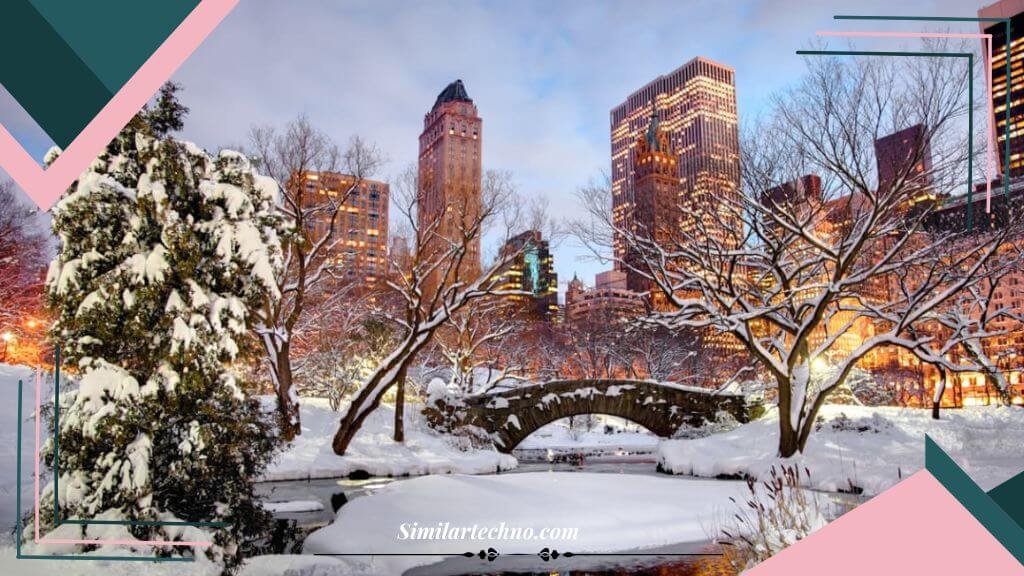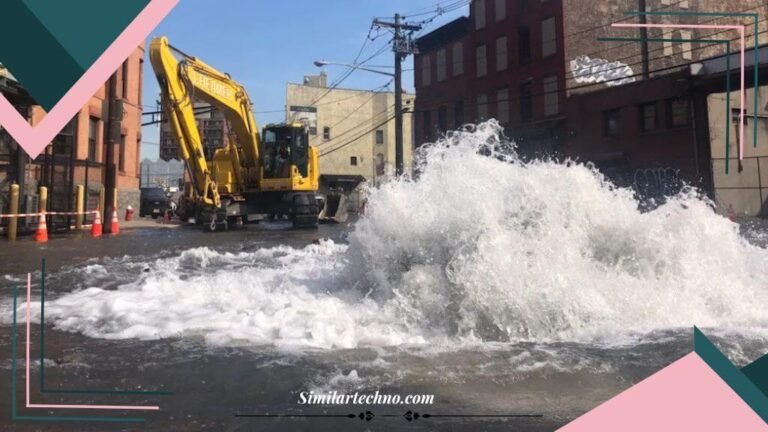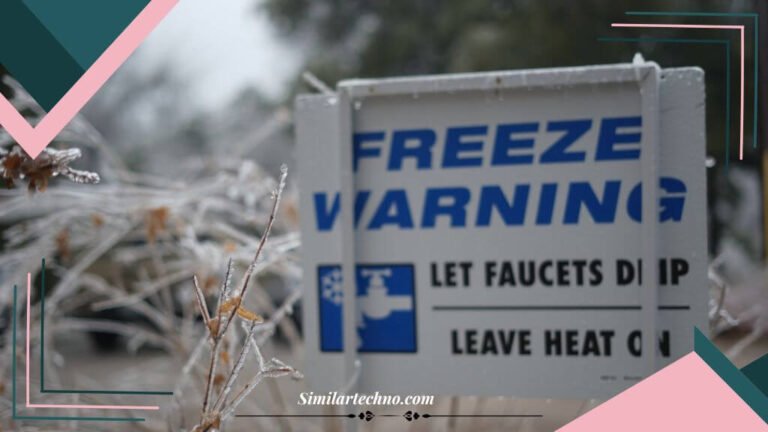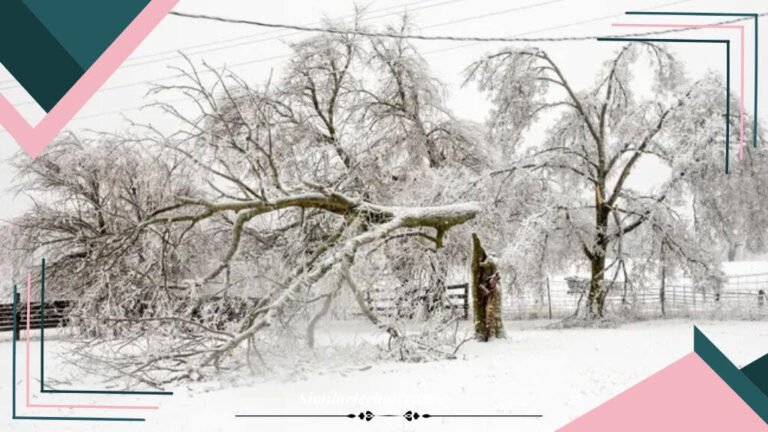NYC snow is a sight to behold—until it isn’t. As someone who has experienced countless snowy days in the city, I can tell you that it’s both magical and messy. The first snowfall turns Central Park into a postcard-perfect scene, and there’s nothing like watching the flakes drift down against the skyline. But then reality hits—slushy sidewalks, delayed subways, and the dreaded black ice. Whether you love or hate it, NYC snow is an unforgettable part of winter in the Big Apple. From epic blizzards to cosy snow days, every storm tells a story. So, grab your boots and hot coffee—when NYC snow arrives, the city transforms overnight!

When Does NYC Get Snow?
NYC snow usually starts in December and lasts until March. However, the heaviest snowfalls happen in January and February. Sometimes, an early storm hits in November, or a late one surprises everyone in April. The weather in New York can be unpredictable, so no two winters are the same. On average, the city gets about 25 inches of snow annually, but some years bring much more. Major blizzards can dump over a foot of snow in just one day. In milder winters, only a few inches fall throughout the season. Snowstorms can be light, peaceful, or strong enough to shut down the city. When NYC snow arrives, schools may close, flights get delayed, and streets turn into slippery paths. Whether it’s a dusting or a blizzard, each snowfall changes how the city moves and feels.
Biggest NYC Snowstorms in History
Throughout history, NYC snow has brought some of the most powerful storms, shutting down the city and leaving lasting memories. One of the worst was the Great Blizzard of 1888, which buried the town under over 20 inches of snow, causing transportation chaos and widespread damage. 1947, another massive storm dropped over 26 inches, leaving residents stranded for days. The Blizzard of 1996 hit hard, bringing 27.5 inches and shutting down schools, airports, and businesses. More recently, the 2016 blizzard set a record with 27.5 inches in one day, turning streets into ghost towns. These storms disrupted daily life and showed how unpredictable NYC snow can be. Roads became impassable, subways stopped running, and people had to dig their way out. Each storm reminds New Yorkers that while snow can be beautiful, it can also bring the city to a standstill.
How NYC Prepares for Snow
When NYC snow is in the forecast, the city moves fast to keep streets and sidewalks clear. The Department of Sanitation has thousands of workers ready to handle snow removal. Salt trucks spread salt on roads long before a storm begins to prevent ice from forming. Once the snow starts falling, snowploughs begin clearing major streets first, then move to more minor roads. Extra workers are called in in big storms to shovel sidewalks and clear subway entrances. Emergency plans help the city stay prepared, with warming centres opening for those in need. Public transit may run on a unique schedule to prevent delays. Even with these efforts, heavy NYC snow can cause problems, leading to traffic jams and slippery sidewalks. The city works hard, but every storm is different, and some snowfalls are too significant to handle easily.
Read More: Freeze Warning: Stay Safe and Warm During 2025
NYC Snow and Transportation
When NYC snow starts falling, the entire transportation system slows down. Buses struggle to move on icy streets, leading to delays or complete cancellations. Snow-covered roads make it hard for drivers to see, causing traffic jams and accidents. Subways, usually the most reliable option, also face problems. Outdoor tracks get covered in snow, forcing trains to slow down or stop running. Some stations flood when snow melts, making commuting even harder. Flights are also heavily affected, with airports cancelling hundreds of flights during big storms. Runways need constant ploughing, and strong winds make it unsafe for planes to take off. Travellers often get stuck at airports, waiting for updates. Even after a storm ends, delays continue as crews work to clear roads and tracks. NYC snow creates significant transportation challenges, making winter travel unpredictable for everyone.
Fun Things to Do in NYC Snow
When NYC snow covers the city, it’s the perfect time to enjoy winter activities. Sledging is a favourite pastime, with spots like Pilgrim Hill in Central Park and Brooklyn’s Prospect Park drawing crowds. Kids and adults alike race down the hills, laughing as they glide over the fresh snow. Ice skating is another great option, with famous rinks like Rockefeller Center and Bryant Park offering a magical experience. Central Park becomes a winter wonderland, with snow-covered trees and frozen ponds creating a beautiful scene. Many people take long walks, build snowmen, or have friendly snowball fights. Cafés fill up with people warming up with hot chocolate after playing in the cold. The city feels different, quieter, and more peaceful under snow. NYC snow may cause some challenges, but it also brings fun and beauty to the town.
Problems Caused by NYC Snow
Heavy NYC snow creates many problems for the city and its residents. Traffic becomes a nightmare as icy roads cause cars to slide, leading to accidents and long delays. Snowploughs work hard to clear the streets, but they can’t keep up in big storms. Sidewalks turn slippery, making walking dangerous. Public transportation also struggles, with buses running late and subways facing shutdowns on outdoor tracks. Schools often close when roads are unsafe, giving kids an unexpected day off. Many businesses also shut down, forcing workers to stay home. While some people enjoy a break, others worry about missing work and losing pay. Flights get cancelled, leaving travellers stranded at airports. Power outages sometimes happen when snow and ice damage power lines. While NYC snow can be beautiful, it also brings serious challenges that affect daily life in many ways.
How to Stay Safe During
When NYC snow covers the ground, staying safe is essential. Walking on icy streets can be dangerous, so taking small steps and wearing shoes with good traction is best. Black ice is hard to see and can make sidewalks extra slippery, so using handrails and avoiding sudden movements can help prevent falls. Dressing warmly is also key, as freezing temperatures can cause frostbite. Layering clothes, wearing gloves, and using a hat help keep the body warm. A waterproof coat and insulated boots protect against cold and wet snow. People should also stay indoors during heavy storms and avoid unnecessary travel. Keeping a flashlight and extra food at home is a good idea in case of power outages. Driving should be done cautiously; public transportation is often the safest option. NYC snow can be challenging, but taking the proper steps helps everyone stay safe and warm.
Read More: Ice Storm Warning: Stay Safe and Prepared! 2025
Best Places to See NYC Snow
When NYC snow falls, the city transforms into a winter wonderland. Central Park is one of the best places to experience snow’s beauty, with its white trees and paths perfect for a peaceful walk. The Bow Bridge, with its elegant design, looks even more stunning when dusted with snow. The Brooklyn Bridge also offers breathtaking city views, with snow gently covering the cables and the skyline in the distance. Other great spots for photos include the streets of Manhattan, where the snow creates a magical atmosphere and the quiet areas of Prospect Park in Brooklyn. If you want to capture the beauty of NYC snow, head to the top of Rockefeller Center for a fantastic view or visit the iconic Times Square, where the lights contrast beautifully with the snow-covered streets.
FAQs
When does NYC typically get snow?
NYC usually gets snow between December and February, with January being the snowiest month.
How much snow does NYC receive annually?
On average, NYC receives about 25-30 inches of snow annually.
What are the biggest snowstorms in NYC’s history?
Some of the most significant storms include the Blizzard of 1888 and the Snowstorm of 2016.
How does NYC handle snow removal?
The city uses snowploughs, salt trucks, and emergency teams to clear roads and sidewalks.
Does snow affect transportation in NYC?
Yes, snow can cause delays, cancellations, and disruptions in buses, subways, and flights.
Conclusion
In conclusion, NYC snow brings both beauty and challenges to the city. While the snow creates stunning views in places like Central Park and the Brooklyn Bridge, it also causes disruptions in transportation and daily life. The town prepares for the snow with snowploughs, salt trucks, and emergency plans to keep things running smoothly. Despite the obstacles, many fun activities can be enjoyed in the snow, such as sledging, ice skating, and taking beautiful photos of the winter landscape. Staying safe during NYC snow involves dressing warmly, wearing the proper footwear, and being cautious while walking or driving. Overall, NYC snow adds a unique charm to the city, making it an unforgettable experience for residents and visitors.







